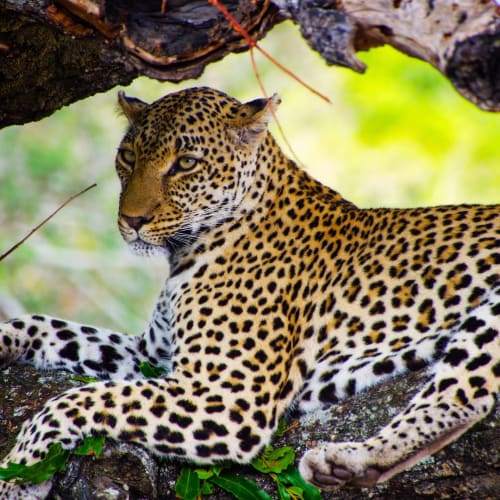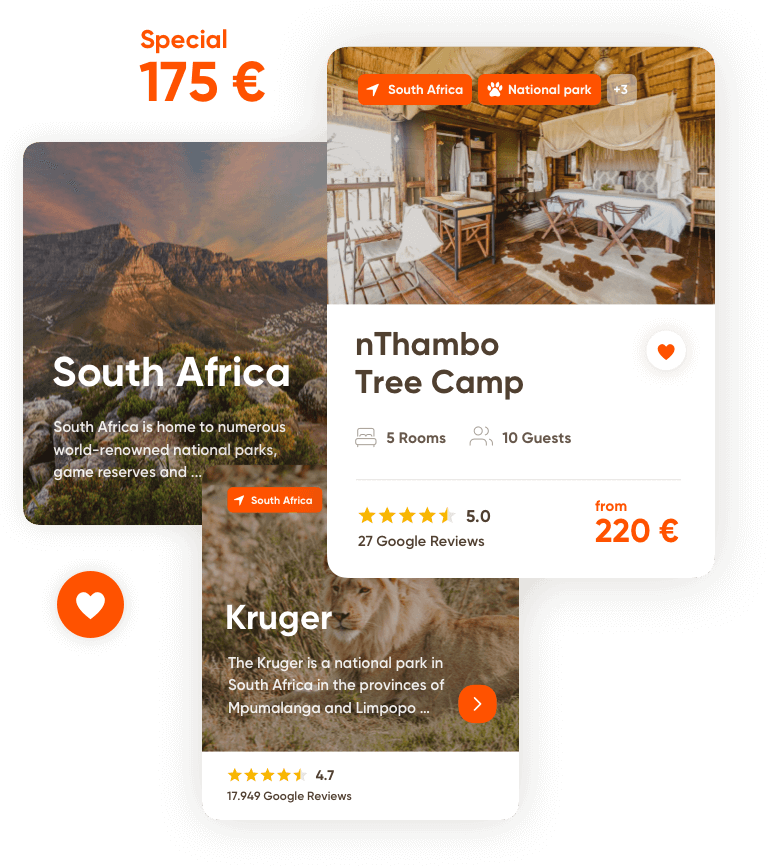If you're planning your next safari holiday in Africa, you've probably already asked yourself when the best time to travel to the black continent is. The good news is that there is no bad time to go on safari in Africa. In this blog post, we'll summarise the pros and cons of each season and give you some tips on which time to travel is best for which country and safari type. So whether you want to see the Big Five or just escape the crowds, you'll find all the important information you need here.
Climate
It is difficult to generalise when is the best time to travel on safari, as the climate zones can vary greatly depending on the country and region and offer different experiences for travellers. However, the division into dry and rainy seasons can serve as a rough guide:
In the dry seasons, the skies are clear and inviting. The mostly pleasant climate and warm temperatures make for ideal travel weather. This travel season is perfect for outdoor activities without having to worry about wet clothes or mud. The bright sunny days make the African savannahs glow in bright colours and provide breathtaking sunsets on the horizon at the end of each day.
During the rainy seasons, you can experience spectacular thunderstorms and dramatic cloud formations that can result in stunning landscape photos. The rains provide lush green landscapes with blooming flowers and bright colours. A stunning backdrop to your safari experience. However, self-drivers should be careful, as the rain can also make some roads impassable due to the mud.
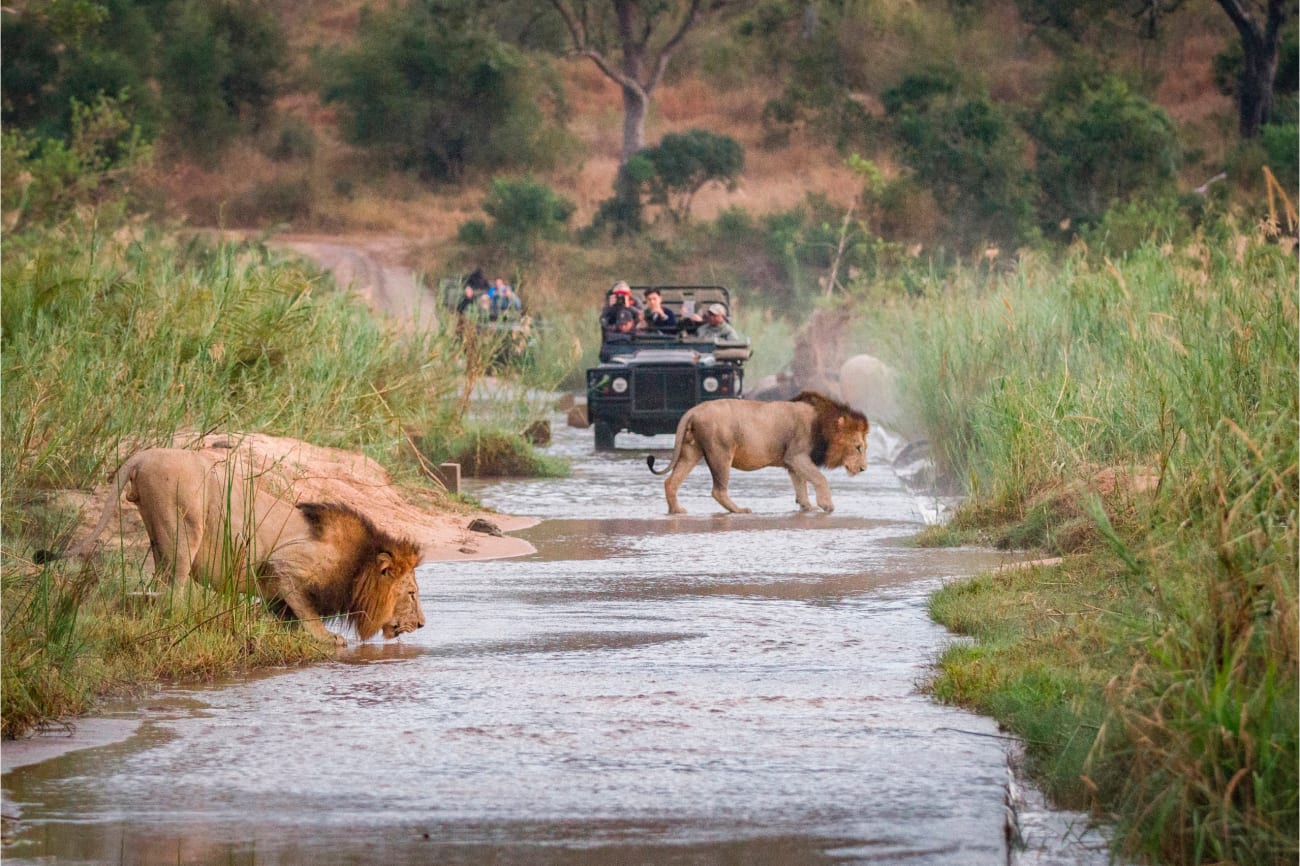
Animal observation
As there is less rainfall in the dry season, access to waterholes is more limited. This means that animals travel longer distances and congregate in certain places to quench their thirst or cool down. This makes a safari at this time of year more attractive, as it is easier to observe the desired wildlife and at the same time you have increased chances of experiencing different animals in one place. In addition, the sparse vegetation in the dry season provides a better view of the surroundings and makes it easier to search for animals. You can easily spot large herds of buffalo or antelope on the vast plains and predators such as lions or cheetahs are also more visible. If you are looking for the Big Five, this time of year is definitely recommended.
In rainy seasons, on the other hand, animals may spread over larger areas and hide in the dense vegetation. This means that you will have a greater challenge to spot some species of animals.
Nevertheless, it is worth the search, because many animals give birth to their young during the rainy season. It is a great opportunity to see newborn giraffes or elephants taking their first steps. Also, animal migration takes place in some parts of Africa at this time. Large herds of animals such as zebra or wildebeest cross the landscape and embark on an annual journey to their new grazing grounds. A captivating experience for those lucky enough to witness it.
The rainy season is also great for bird watching, as many migratory birds return to Africa and breed during this time of year. It is a great opportunity to see rare species like the shoebill or the marabou.
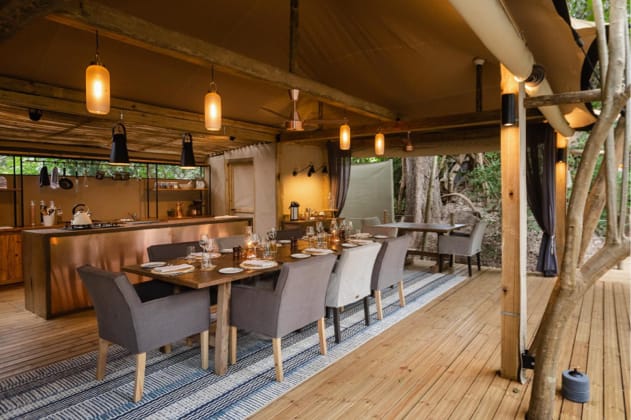
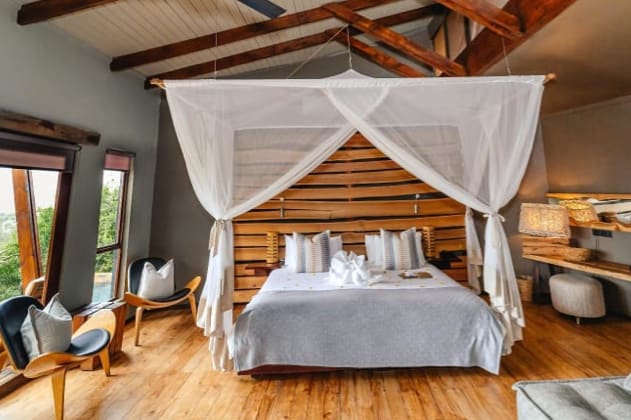
Accommodation
If you plan your trip during the dry season, you should know that many other people will also take advantage of the favourable weather conditions. As a result, activities and attractions may be crowded and excursions are likely to take longer than usual. Accommodation tends to book up quickly, so it is advisable to book as early as possible. You should also plan for higher prices.
In contrast, the rainy season can be a great time for travellers who don't mind a little rainfall. Due to lower demand, prices for accommodation can be much lower and you benefit from fewer crowds than at other times of the year.
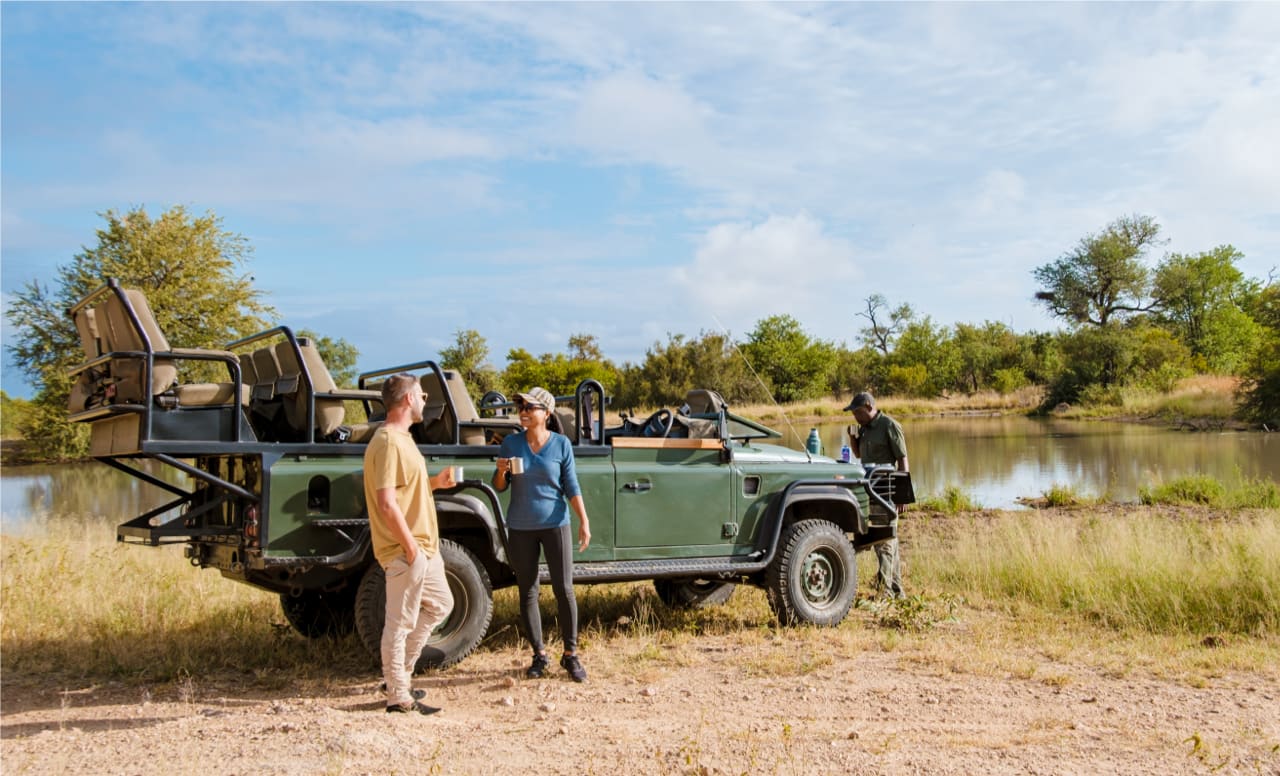
The best time to go on safari in South Africa
South Africa is a very diverse destination due to its geographical location and the variety of landscapes and altitudes. On the west coast, in the region around Cape Town, the climate is Mediterranean with warm and dry weather in the South African summer. In winter, however, it can be cool and damp due to the Benguela Current, with most rain falling between June and September. On the east coast, the Agulhas Current provides warm and humid weather. In the interior around Johannesburg, on the other hand, it is much drier. Here it usually rains most often in the South African summer and the winter months are comparatively mild.
When in South Africa, a safari in the Kruger National Park in the north-east of the country is not to be missed. Other extremely popular reserves are Pilansberg National Park, Addo Elephant National Park and Hluhluwe-Imfolozi National Park. For those who prefer something a little more exclusive, Lion Sands (Sabi Sands) Private Game Reserve or Londolozi (Sabi Sands) Private Game Reserve are sure to offer the perfect accommodation and an unforgettable experience.

Climate table for Kruger National Park
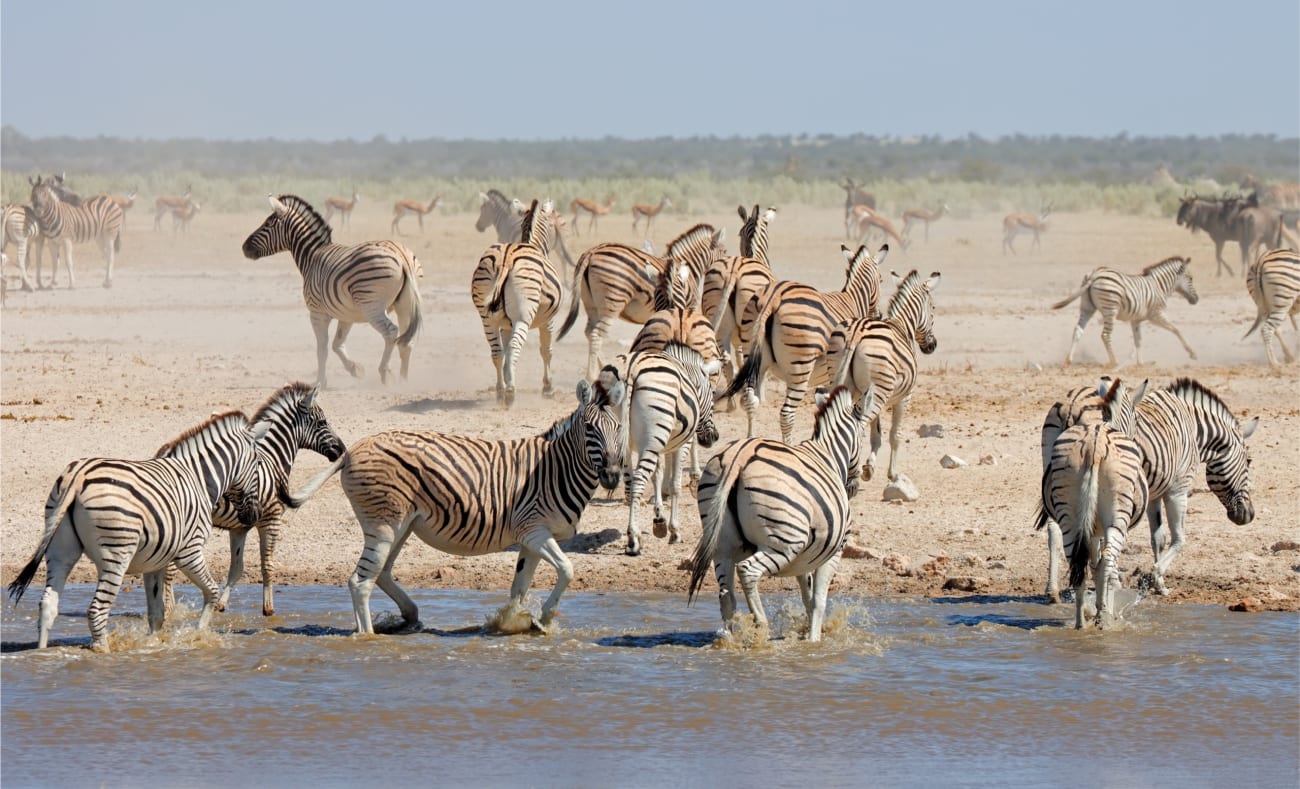
The best time to go on safari in Namibia
Namibia is a country with different climate zones and the weather can vary depending on the region. However, large temperature fluctuations are not uncommon throughout the country and can even occur within a day. In general, however, Namibia is known for its hot temperatures and dry weather, as well as short but heavy rain showers in the Namibian summer. For travellers who do not tolerate heat so well, it is recommended to travel during the dry months of June and July. These fall in the Namibian winter and, with milder temperatures, offer a good time to travel for a Namibia holiday.
The country is known for its vast desert landscapes and unique wildlife sightings, including the rare black rhino in Etosha National Park. But the Namib-Naukluft and Skeleton Coast reserves are also exciting destinations.

Climate table for Etosha National Park
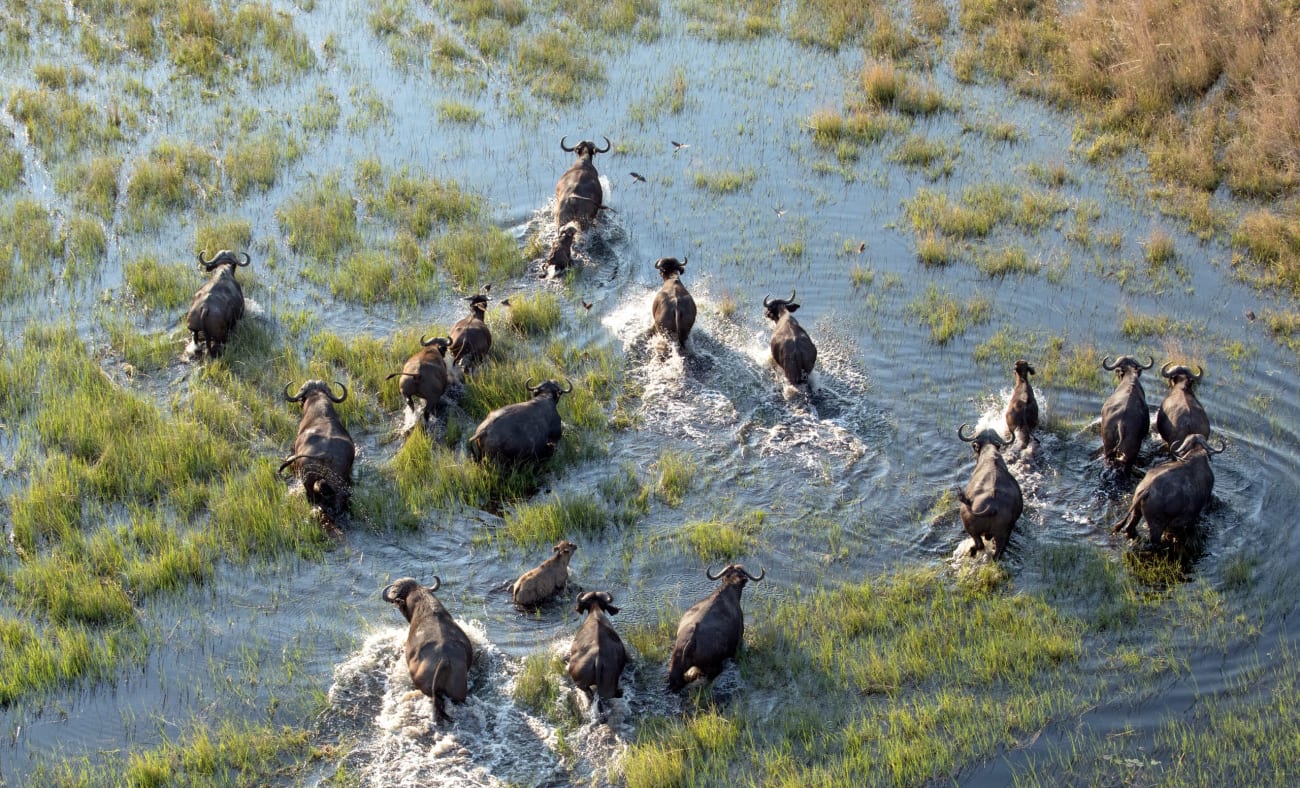
The best time to go on safari in Botswana
Botswana is a beautiful country in southern Africa with fantastic wildlife viewing opportunities, including the Okavango Delta - one of Africa's most famous safari reserves. The climate is subtropical and dry. Generally, it is said that the best time to travel is from April to October. During this dry season, the weather is pleasant and wildlife viewing is optimal in many areas. There are exceptions, however, such as the Kalahari semi-desert, which only really comes to life during the rainy season from November to March.
Particularly worth seeing are the Moremi Game Reserve in the heart of the Okavango Delta, the Chobe National Park and the Central Kalahari Game Reserve.

Climate table for Okavango Delta
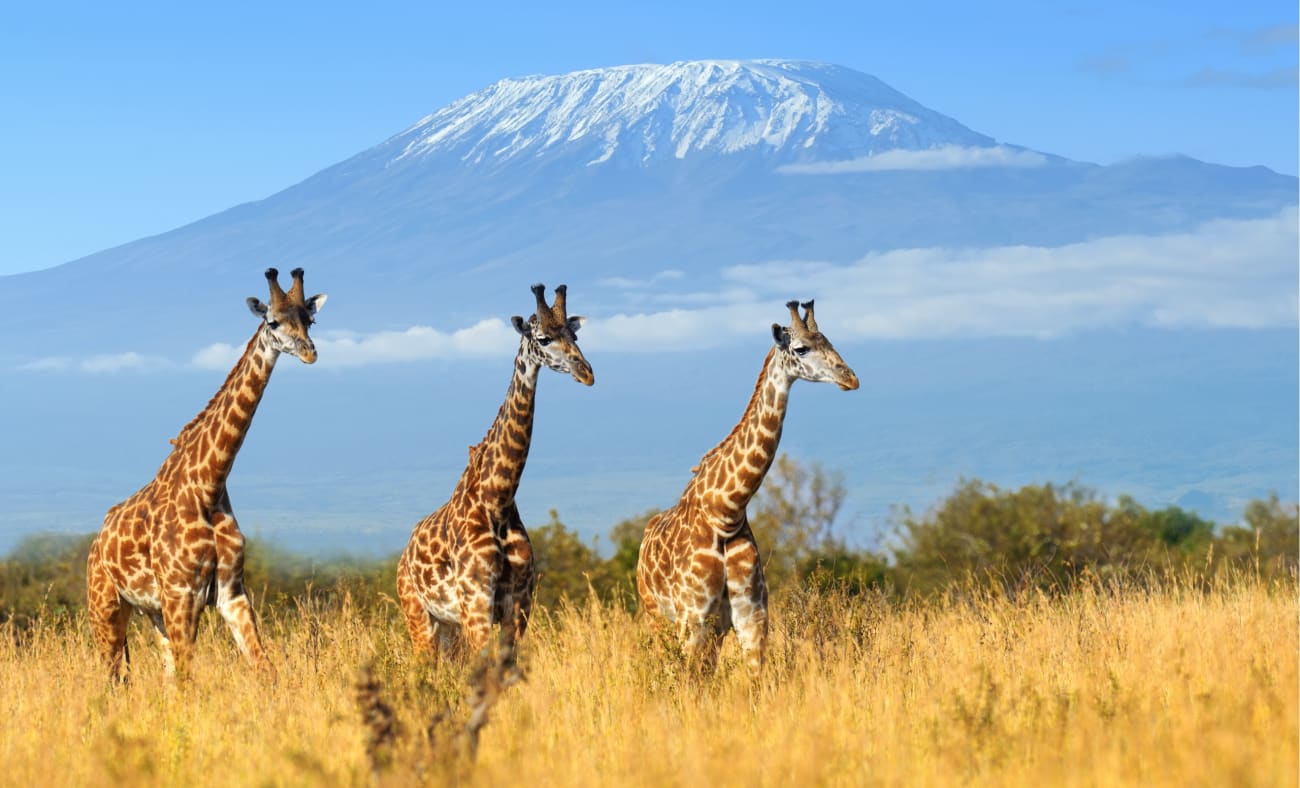
The best time to go on safari in Kenya
Due to its proximity to the equator, Kenya is always pleasantly warm. Kenya's climate can be roughly divided into two climate zones: the highland climate and the coastal climate. On the coast, you can expect constant temperatures of 28°C and even up to 33°C in winter (our summer months), while the warmest temperatures inland are reached from January to March with up to 27°C. In the dry season from July to August, temperatures are a little cooler at around 22°C, which can cool you down.
Popular reserves in Kenya are the Masai Mara Game Reserve and Amboseli National Park, as well as Tsavo East and Tsavo West. All four reserves allow for incredible animal sightings, from big cats to elephants and more.

Climate table for Amboselia National Park
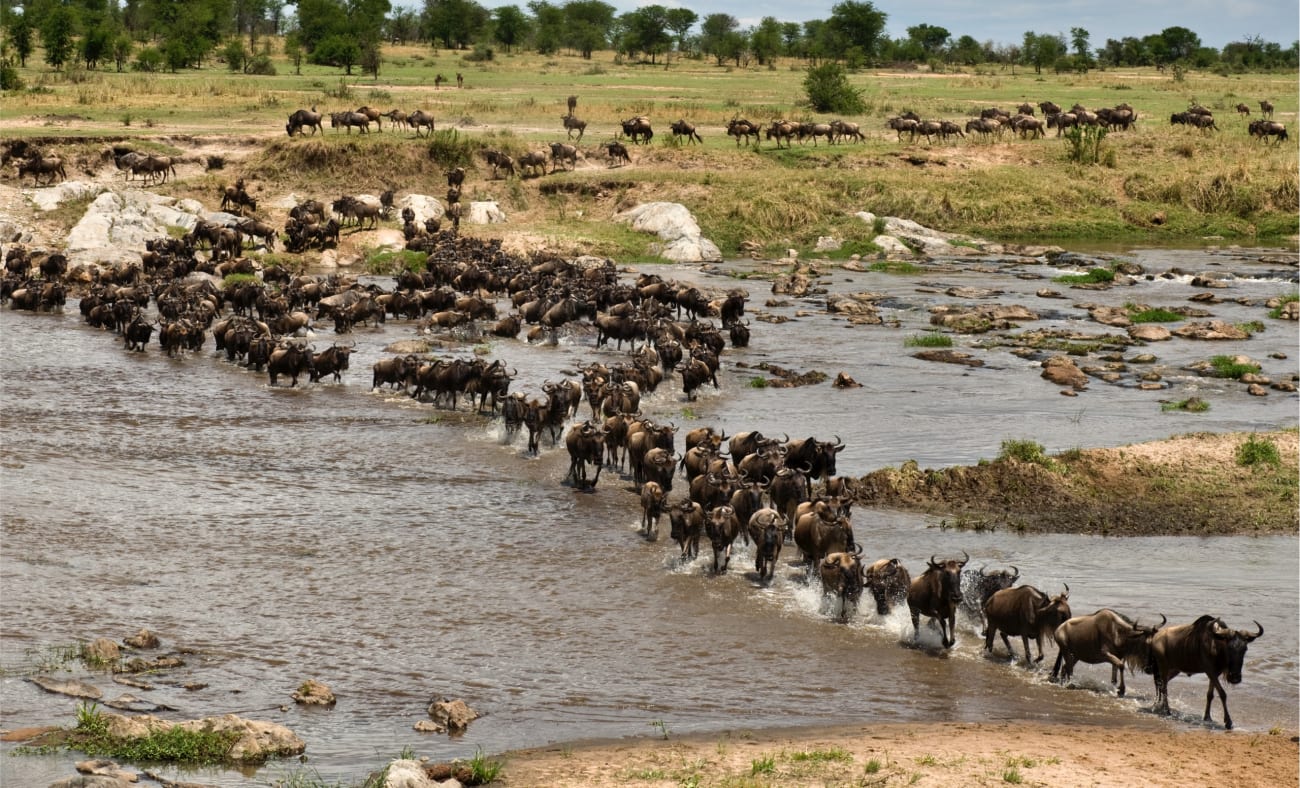
The best time to travel for safaris in Tanzania
Tanzania is a country full of safari adventures and has delighted millions of safari visitors over the years. The most pleasant time to travel is probably during the months from June to October. The pleasant temperatures of around 26° C to 29° C make this the perfect time for a Tanzania holiday. However, if you want to see the great migration of thousands and thousands of wildebeest and zebra in the Serengeti National Park, you should plan your trip for February or March.
Apart from the Serengeti National Park, Lake Manyara National Park and Tarangire National Park are among the best places for an unforgettable safari in Tanzania.

Climate table for Serengeti National Park
Conclusion
In summary, the best time to go on safari in Africa depends entirely on what kind of experience you are looking for. If you're into game viewing and want to see the Big Five up close and personal, and you're willing to spend a little more, then a safari during the dry season is probably the best choice. However, if you prefer to enjoy Africa's breathtaking nature undisturbed and don't mind a little rainfall, then a visit during the rainy season is a good option.
Ultimately, when planning a safari, you should consider all conditions such as weather, budget and desired wildlife sightings to ensure you get your money's worth.



